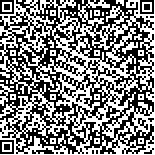| 摘要: |
| 根据2011-2012年4、6、8、10月和11月共5个航次的网采浮游植物样品,以细胞体积转换碳含量为基础,分析了南黄海海域网采浮游植物在春、夏、秋三个季节的变化规律。结果表明:浮游植物总碳含量及各类群碳含量均表现出明显的季节差异,春季和秋季浮游植物在空间分布上纬度差异较小,呈现由近岸到外海降低的特点;夏季海域南部浮游植物生物量远远高于南黄海北部及中部区域。浮游植物总碳含量最高值出现在夏季,为(4.62±11.79)×104μgC/m3,最低值出现在秋季,在1000μgC/m3以下。甲藻在浮游植物中所占比例在夏季8月最低,为14.05%,在初春和秋末较高,约为48%;甲藻的比重在南部海域明显较低。温度和盐度是影响南黄海浮游植物群落的重要环境因子,而浮游植物与营养盐的关系呈现不同的季节特点。圆筛藻属(Coscinodiscus)和角藻属(Ceratium)在各调查月份均为南黄海海域浮游植物群落的优势种属。本文从浮游植物碳含量的角度为南黄海海域的生态状况研究提供了基础资料。 |
| 关键词: 南黄海 网采浮游植物 季节变化 碳含量 |
| DOI:10.11693/hyhz20160400072 |
| 分类号: |
| 基金项目:中国科学院战略先导科技专项,XDA11030204号;国家重点基础研究发展计划(973计划),2014CB441504;青岛海洋科学与技术国家实验室鳌山科技创新计划项目“近海生态灾害发生机理与防控策略”,2016ASKJ02号;国家基金委-山东省联合基金项目“海洋生态与环境科学”,U1406403号。 |
附件 |
|
| SEASONAL VARIATIONS OF NET PHYTOPLANKTON IN CARBON BIOMASS AND COMMUNITY STRUCTURE IN THE SOUTH YELLOW SEA |
|
YANG Yang1,2, SUN Xiao-Xia1,2,3
|
|
1.Jiaozhou Bay Marine Ecosystem Research Station, Institute of Oceanology, Chinese Academy of Sciences, Qingdao 266071, China;2.University of Chinese Academy of Sciences, Beijing 100049, China;3.Laboratory for Marine Ecology and Environmental Science, Qingdao National Laboratory for Marine Science and Technology, Qingdao 266071, China
|
| Abstract: |
| Based on net phytoplankton samples collected in April, June, August, October and November in 2011-2012, seasonal variations in carbon biomass, proportion of dinoflagellates, and dominant genus were analyzed. The results reveal obvious seasonal differences in total carbon biomass and spatial distribution. In spring and autumn, carbon biomass decreased from inshore to offshore regions while in summer phytoplankton bloomed in the southern region. The maximum carbon biomass of total phytoplankton was (4.62±11.79)×104μgC/m3 in the summer, while the minimum was below 1000μgC/m3 in autumn. The proportion of dinoflagellate was lowest in summer at 14.05%, whereas in April or November the proportion was about 48%. Dinoflagellate proportion was relatively lower in the southern region. Temperature and salinity were the key factors affecting the phytoplankton structure; and relationships between phytoplankton and nutrients varied seasonally. Coscinodiscus and Ceratium dominated in all the survey months. This paper provided basic data for the study of ecological condition of South Yellow Sea from the view point of phytoplankton carbon biomass. |
| Key words: South Yellow Sea net phytoplankton seasonal variation carbon biomass |
